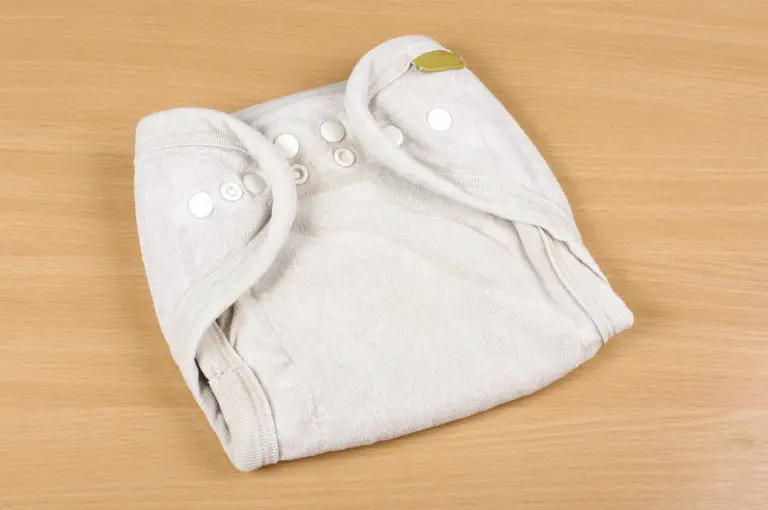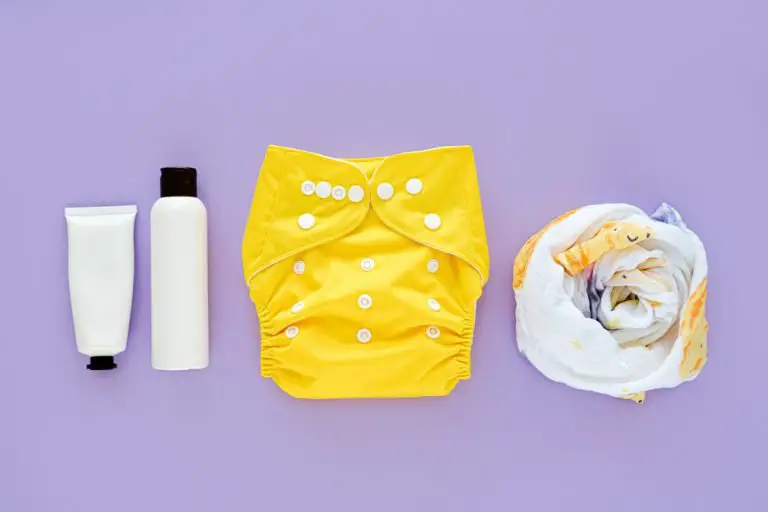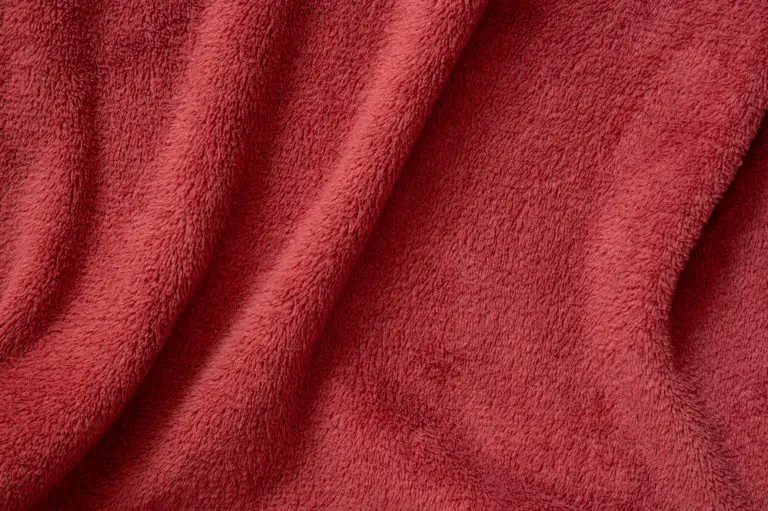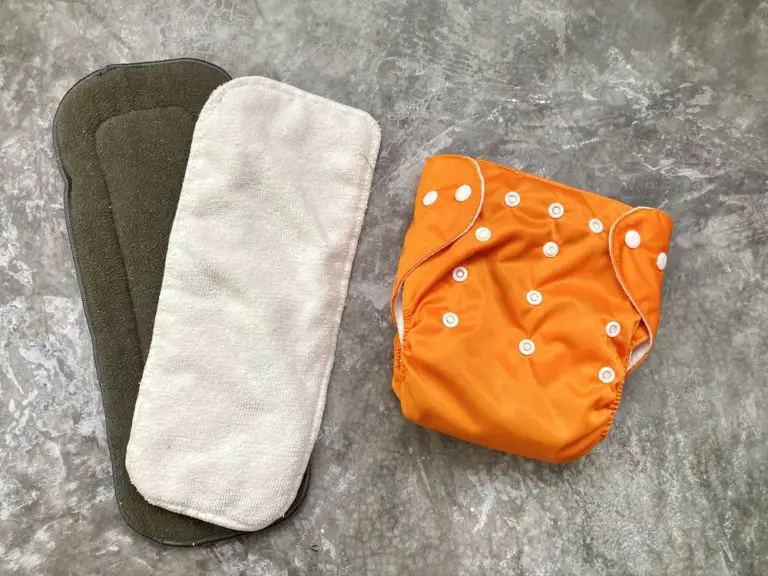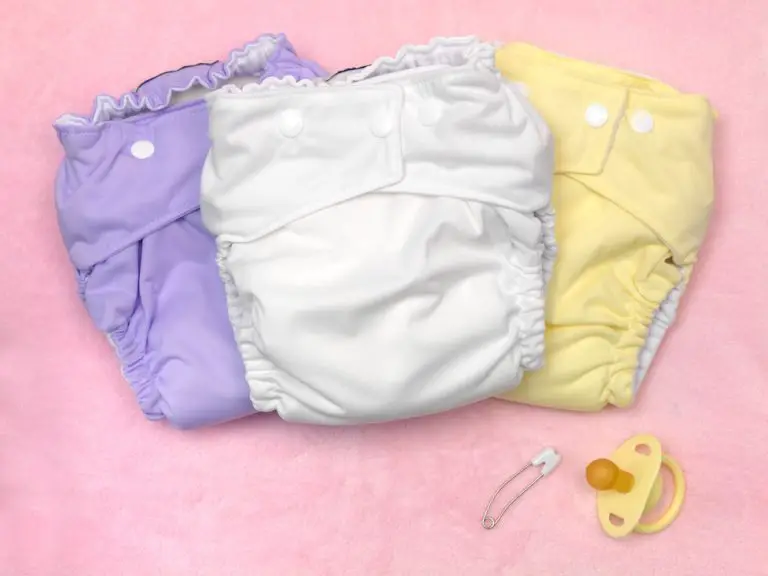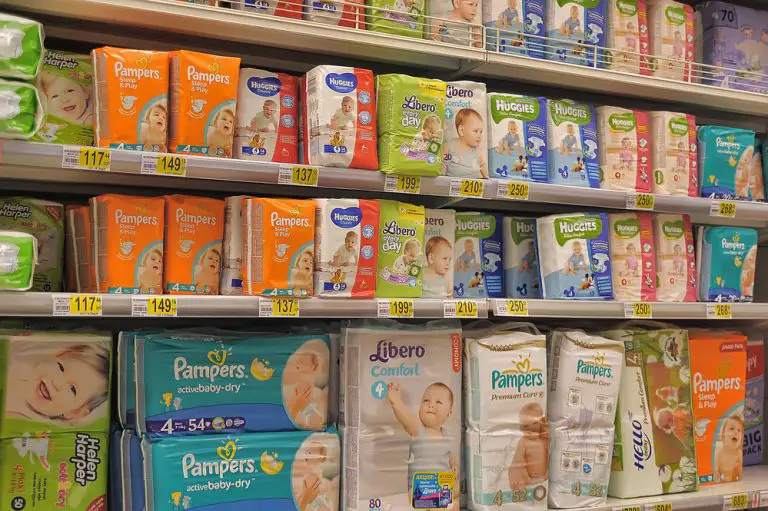Microfiber Fabric: Properties, Pricing & Sustainability (2024)
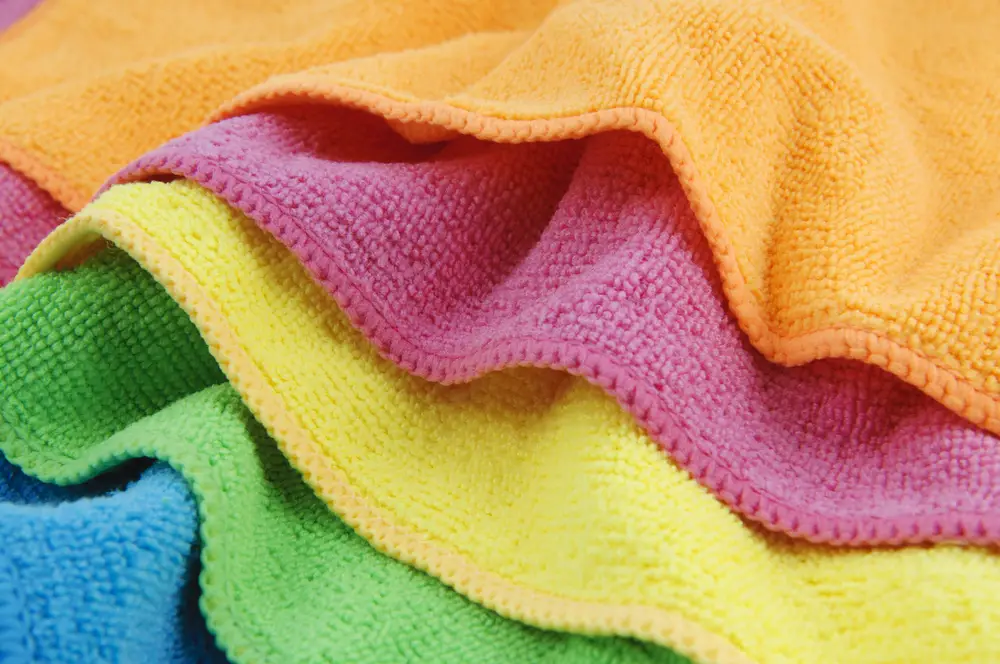
Many in the textile world hailed microfiber fabric as a “wonder fabric.” Microfiber is a very thin, synthetic textile made from polyester.
It is incredibly absorbent and does an excellent job at wicking moisture away from the body. Because of its lightweight texture and ability to wick moisture away, microfiber is frequently used for cloth diapering, sportswear, and cleaning cloths.
Fabric Profile
Fabric Name: Microfiber
Synonyms: Polyester, Microfibre
Fiber Type: Synthetic fiber, polyester
Breathability: Very breathable
Absorbency: Very water-resistant
Characteristics: Wicks moisture away, absorbent, soft, breathable, prone to pilling
Washing Requirements: Machine was on cold or warm
Common Uses: Cloth diaper liner, cleaning cloths, mops, insulation, backpacks, athletic wear, upholstery.
Heat Press Temperature: If needed, use a cool iron
- What is Microfiber?
- Types of Microfiber Fabric
- Microfiber Fabric Characteristics
- Downsides of Microfiber Fabric
- Common Uses of Microfiber Fabric
- Microfiber Fabric Pricing
- How is Microfiber Made?
- Where is Microfiber Manufactured?
- Microfiber Fabric Environmental Impact
- Microfiber Fabric Certifications
- History of Microfiber Fabric
- Microfiber Fabric Alternatives
What is Microfiber?
Microfiber cloth is a highly-absorbent synthetic material made from polyester. It is called microfiber because the individual strands used to weave the fabric have a diameter of fewer than 10 micrometers.
Microfiber textiles came about in the 1950s and 60s through a series of experiments by textile manufacturers. However, they didn’t find widespread popularity until the 1990s.
Modern microfiber fabric has found widespread use in the cleaning industry and is commonly used for mops, car cleaning cloths, dusting cloths, and more. It is also widely used for cloth diapering liners and inserts because it is absorbent. Sportswear is a third modern application of this “wonder fabric.”
Microfiber is 100% synthetic and does not contain any natural elements. Sometimes microfiber is blended with other polyesters or polyamide, another synthetic fabric; the most common microfiber polyamide blend is 80/20, but you can find it in various combinations.
Microfiber vs. Cotton vs. Polyester
The main difference between microfiber material and cotton is that microfiber is a synthetic material, and cotton is a natural material made from the cotton plant. Microfiber and cotton are both soft to the touch and very breathable, although cotton is the more breathable.
Some people have an allergic reaction to microfiber, making it impossible to use a fabric that directly touches the skin. Additionally, microfiber is prone to generating static electricity, which can make wearing it uncomfortable.
On the other hand, microfiber is usually cheaper than cotton, and it doesn’t wrinkle as much. Microfiber is also more durable than cotton.
Microfiber is a type of polyester, so it depends on which type of polyester you are comparing it to, as polyester is used to make various materials. In general, however, microfiber is softer and more absorbent than traditional polyester.
Types of Microfiber Fabric
Microfiber is an incredibly versatile fabric and is used to make a wide variety of fabrics and textiles.
In the upcoming section, we will cover the specifications, pros, and cons of ten different types of microfiber: terry microfiber, plush microfiber, two-ply microfiber, pearly microfiber, waffle microfiber, twist microfiber, chenille microfiber, suede microfiber, diamond microfiber, and mesh microfiber.
Terry Microfiber
Terry microfiber is a common type of microfiber wave commonly used to make bath towels, dish towels, and washcloths. You have probably heard of the term terry cloth before; terry cloth is traditionally made from cotton, but microfiber manufacturers have made a comparable microfiber textile used chiefly for bath and kitchen towels.
Plush Microfiber
Plush microfiber, also known as micro plush or by the name brand of Minky plush, is an ultra-soft, fuzzy microfiber fabric. It is commonly used to make blankets and robes, baby diapers and blankets, and other luxury sleep and comfort items. Because of its luxuriously soft feel, plush microfiber is one of the most expensive microfiber styles.
Two-Pile Microfiber
Two-pile or split-weave microfiber is a type of microfiber during which the fibers are split during the manufacturing process and creating tiny loops in the fabric. Two-pile microfiber fabrics are typically rougher to the touch but are much more absorbent. When blended with terry microfiber, two-pile microfiber makes excellent towels and cleaning cloths.
Pearly Microfiber
Pearly microfiber has a pearly or shiny sheen, but it is still very soft and absorbent. Pearly microfiber is commonly used to make car cleaning cloths, squeegees, mops, and other cleaning supplies. In addition, Pearl microfiber is an excellent choice for glass cleaning or polishing because of its small, tight weave, which grips dirt and dust tightly.
Waffle Microfiber
Like pearly microfiber, waffle microfiber is an excellent choice for cleaning glass and dusting. The raised weave-like pattern of the textile not only quickly collects dust and dirt, but its raised surface creates less friction and abrasion. In addition, waffle microfiber differs from traditional microfiber fabric texture because it has a raised grid-like pattern instead of loops or single fibers.
Twist Microfiber
Twist microfiber has sections of ling fibers twisted into a double-helix pattern. The longer piles of fabric give this version of the textile greater absorbency and less friction. Twist microfiber is commonly used for mops and cleaning cloths to clean large surfaces. Twist microfiber also works well as a drying cloth because it can absorb so much water.
Chenille Microfiber
Chenille microfiber has thick, tube-like fingers that almost resemble a sea anemone! These thick, finger-style protuberances make chenille microfiber a top pick for cleaning and dusting cloths. You will often find chenille microfiber gloves and cloths in carwashes and used for industrial cleaning; however, they work well in the home for dusting and mopping.
Suede Microfiber
Despite the name, suede microfiber is not made from suede. It is, however, manufactured to have a soft, smooth texture similar to suede. Suede microfiber has a tiny and low pile and is often used for eyeglass wipes and cleaning other types of lenses. Suede microfiber cloth material is also widely used for upholstery, pillows, and curtains.
Diamond Microfiber
Diamond microfiber is a standard microfiber fiber woven to have a diamond-like weave. The diamond-shaped weave helps the fibers trap dust and dirt. In addition, when used for drying, the shape of the weave help soak up liquid quickly. Diamond weave microfiber is often used for sponges and other cloths designed to clean and wash.
Mesh Microfiber
Mesh microfiber is designed with small holes, similar to traditional mesh, that help create a rough, abrasive texture for scrubbing. Mesh microfiber is often used to clean upholstery, leather, and interior and exterior car cleaning. Because of its design, mesh microfiber works well at cleaning up sticky, caked-on messes.
Microfiber Characteristics
Microfiber has many excellent qualities that make it such a versatile and well-used fabric; some of the top microfiber fabric properties are that it is highly absorbent and easy to clean.
Microfiber is also very breathable and does an excellent job at wicking moisture away; these two microfiber fabric qualities are two reasons it is such a popular choice for cloth diapering and athletic wear.
Microfiber clothing is lightweight and breathable, and it is one of the least expensive fabrics manufactured. Another benefit of microfiber is that it can be treated to become windproof and waterproof.
Additionally, microfiber holds its shape well and is an exceptionally strong fabric. Because of its strength and durability, microfiber makes an excellent cleaning cloth because it can be washed and used repeatedly without wear and tear. These same properties are some of the same reasons microfiber is such a popular choice for clothing diapering too!
Downsides of Microfiber
While microfiber has many positive traits and qualities, there are some downsides to this wonder fabric. For starters, microfiber is prone to pilling and frequently causes static, which could result in an electric shock.
Other negative characteristics of microfiber fabric include that it is a synthetic polyester that creates a lot of pollution and hazardous waste. In addition, some people have allergic reactions to polyester and microfiber.
When used for cloth diapering, while highly absorbent, you cannot place it directly next to your baby’s skin, so you must always use it with another skin-safe fabric such as cotton, hemp, or bamboo.
Microfiber is commonly used as a cleaning cloth; however, caution must be taken when cleaning certain items as microfiber could scratch and damage certain surfaces.
For example, you should not use microfiber to clean silver, copper, or other soft, precious metals. Additionally, when using microfiber as a cleaning cloth, you should wear gloves as it can be abrasive to the skin.
Common Uses of Microfiber Fabric
Because of its durability and versatility, microfiber is a fabric that has dozens of applications in the clothing and home goods arenas. Some of the most common uses for microfiber include cleaning and dusting cloths, mops, polishing cloths, cloth diaper inserts, activewear, and sports jerseys.
Microfiber is excellent at wicking away and absorbing moisture while being incredibly breathable. These combined factors are why it is a top choice for sportswear and cloth diapering. However, these beneficial traits also make it a fabric widely used for upholstery, jackets, robes, bathing suits, bags, and even shoes!
Other uses for microfiber include table cloths, insulation, wallets, backpacks, car upholstery, and handbags. In addition, microfiber is commonly used in mass-produced towels for pools and water resorts because it is quick to absorb and dry and easy to care for.
The NBA briefly experimented with basketballs made from microfiber in the early 2000s, but players complained the balls didn’t bounce and perform the same as traditional rubber balls. Even though the NBA scrapped the idea, you can still find various sports balls, especially for children, and recreational play made from microfiber.
Microfiber in Cloth Diapers
Microfiber is commonly used by parents who cloth diaper. Microfiber is often used as the lining of a washable cloth diaper shell but can also be used for added inserts.
Parents like using microfiber for overnight cloth diapers, long trips, or if they have a heavy wetter because the inserts can hold more liquid than many other cloth types.
The downside, however, is that microfiber can’t be placed directly next to your baby’s skin because it can cause a rash or irritation. When using microfiber inserts, you will need to pair it with a softer, less absorbent natural material such as cotton, bamboo, or hemp.
Microfiber inserts are most commonly used with pocket diapers because the pocket layer provides protection to your baby’s skin.
Microfiber tends to be much cheaper than natural diaper inserts, and they are relatively easy to clean and dry. Unlike some other diaper inserts, microfiber can go in the dryer; however, they are prone to pilling over time.
Microfiber Fabric Pricing
Microfiber fabric pricing has a relatively wide range depending on the type of microfiber and its intended use. However, microfiber is much less expensive per yard than most natural fibers.
On the other hand, microfiber, especially high-quality microfiber, tends to cost more than other types of polyester fabrics.
The highest microfiber fabric price is usually for upholstery fabrics that are thicker and heavier in weight and have likely been treated with additional water and stain-resistant processes. On average, microfiber fabric by the yard used for upholstery costs $18-$25.
Microsuede is slightly cheaper, averaging around $12-$14 per yard, and works well for skirts, jackets, handbags, and pillow covers. Microsuede is a lighter microfiber fabric weight than upholstery fabric but is still durable and very soft to the touch.
Microfiber diaper inserts cost about $5 apiece and are usually sold in packs of three or five. If you are cloth diapering full time, you will need a minimum of 12-15 inserts if you plan on washing your diapers daily.
How is Microfiber Fabric Made?
Microfiber is a type of polyester, so it is a petroleum product at its base level. The petroleum base is refined and forced through a spinneret to produce fibers through a complex chemical process.
To create the ultra-fine fibers that define microfiber, specialized long metal tubes are used in addition to the spinneret. To be considered a microfiber, it must be thinner than one denier, which is less than the diameter of a silk thread and five times thinner than the average human hair.
Once the fibers are formed, they can be woven into different patterns and thicknesses depending on what the textile will be used for. Manufacturers may also dye the fabric or treat it with additional water-resistant and stain-resistant coatings.
Many cleaning products are 100% microfiber; however, you will see microfiber blended with polyamides in many instances, especially for towels and home goods.
Where is Microfiber Manufactured?
Like many other textiles, China is one of the leading microfiber manufacturers. However, the fabric originated in Japan, and the country remains a significant contributor to the world’s microfiber supply.
In the 1980s, a decade after its introduction to the market, many European manufacturers began creating microfiber. As a result, Europe can still be considered a significant maker for producing and exporting microfiber products.
The United States is also a significant microfiber manufacturer, and one prominent U.S. manufacturer and supplier is MaximMart, located in Florida. MaximMart specializes in cleaning and industrial supplies such as towels, mops, detailing cloths, and dairy towels.
Simple Housewares, located in California, manufactures one of the top 5 microfiber cleaning cloths, according to BestReviews. These ultra-soft cleaning cloths also come with a Climate-Friendly Pledge and Compact by Design certification from Amazon.com to give consumers more peace of mind that they are choosing eco-friendly products.
Microfiber Environmental Impact
Like other polyester and synthetic fabrics, microfiber has a significant negative impact on the environment. Microfiber is made from petroleum, which itself causes air and water pollution when not handled properly. Additionally, the process of creating microfiber releases waste that pollutes the surrounding air, water, and land.
Microfiber is one of the most significant pollutants of the ocean, and a recent study states that two-million tons of microfiber are released into the ocean annually. The same study reports that 13 million tons of synthetic materials are disposed into the oceans each year. Approximately 2.5 million tons make it into the rivers and smaller waterways.
In addition to the water pollution microfiber contributes to, it is not biodegradable like natural fabrics, which means it takes up space in landfills with no clear idea of how long if ever, it will break down. As a result, microfiber is a major contributor to the earth’s ongoing plastic waste problem.
These microfiber facts can be complex for some consumers to process because it has become a fabric that is part of our daily lives and seems to have endless applications and uses.
Microfiber Certifications
There is some good news on the environmental front regarding microfiber certifications. Some manufacturers have begun using recycled products to create microfiber, which lessens the product’s carbon footprint on the planet.
Microfiber manufactured from recycled fibers is eligible for the Global Recyclable Standard or GRS. The GRS evaluates the source material and manufacturing process to ensure the textile is socially and environmentally sustainable.
Amazon.com has partnered with third-party certifiers to create their own certification for products sold on their site and offer a Climate-Friendly Badge for products that meet specific requirements.
Their climate-friendly badge covers a wide range of products that have been certified by other organizations and ensures customers that they are making environmentally friendly choices. Once certified by another organization, certain microfiber products sold on their site can receive the climate-friendly badge.
Another possible certification for microfiber comes from the International Organization for Standardization or ISO. The ISO offers a variety of certifications based on the microfiber fabric quality, grade, and type.
History of Microfiber Fabric
Microfiber fabric history began a few decades before the fabric was eventually invented.
In the 1930s, the American company Dupont began experimenting with nylon to replace silk, primarily for stocking and parachutes. Throughout the course of WWII, nylon took over for silk in many industrial and personal items.
The post-war industrial boom encouraged many textile manufacturers to continue to experiment with fibers that could function similar to nylon and still be cost-effective to produce. The boom continues, and acrylic and rayon were invented in the 50s and 60s.
Finally, in the 1970s, a Japanese scientist is said to have created the fiber for use in ladies’ sportswear. People were looking for a comfortable and lightweight fabric that conformed to the body and be worn while active.
In the 1980s, European manufacturers began using microfiber in swimwear, and eventually, by the early 2000s, microfiber was being introduced as the new miracle cleaning cloth and has remained relevant ever since.
Microfiber Alternatives
There are several different alternatives to microfiber; it just depends on what you intend to use the fabric for!
First, if you would like to replace your microfiber cleaning cloths with something more environmentally friendly, consider cotton dusting, drying, and polishing cloths.
Cotton is not as absorbent as microfiber, but it is still highly absorbent and soft, so it won’t damage glass or eyewear if used for polishing. In addition, cotton does not match microfiber durability and may not stand up to as many washes.
Cotton also makes a good alternative for microfiber bedding and workout gear because it is soft and breathable. However, cotton doesn’t do nearly as good at wicking moisture away.
If you are looking for an alternative to microfiber towels, consider terry cloth or cotton. You could also use paper towels in the kitchen; consider using bamboo paper towels as they are more environmentally friendly than traditional ones.
There is a long lister of alternatives when it comes to cloth diapering. While most are not as absorbent as microfiber, you can double up when needed; bamboo, hemp, and felt are all absorbent, natural stay-dry fabrics that you can use in place of microfiber.
FAQ
What is microfiber fabric?
Microfiber is a synthetic fabric with individual fibers less than one denier in diameter. It is highly absorbent and used widely as a cleaning and dusting material.
What is microfiber fabric made of?
Microfiber is polyester, so it is a petroleum-based fabric. In essence, microfiber is a plastic product that has been spun to be extremely fine and soft.
How do you clean microfiber fabric?
Microfiber can be washed in the washing machine in cold or warm water. It can also be placed in the dryer.
Is microfiber breathable?
Microfiber is considered a highly-breathable fabric which is one of the reasons it is a popular choice for cloth diapering and athletic wear.
What does microfiber feel like?
There are several different types of microfiber, but in most cases, microfiber is soft to the touch. However, some microfiber used for scrubbing can feel scratchy.
What is microfiber fabric suitable for?
Microfiber works well for sportswear, swimsuits, baby diapers, and a wide range of cleaning products such as mops, dusting cloths, and towels.
Is microfiber the same as velvet?
No velvet and microfiber are different fabrics. Velvet can be made from silk, cotton, or synthetically from nylon.
Can I use a microfiber cloth for my face?
Yes, some types of microfiber are safe for the face, and it is often used in washcloths and hair towels. However, some people have reactions to microfiber.
Is microfiber fabric suitable for furniture?
Microfiber cloths work well at cleaning upholstery and car interiors and can also be used as polishing cloth.
Why is microfiber so popular?
Microfiber is popular because it is inexpensive, versatile, and has many top traits, such as the ability to wick moisture away, being lightweight, and being breathable.

Laurel Davidson
Laurel brings her passion for parenting and years of problem-solving experiences to ParentingMode. She is the editor of ParentingMode, ensuring that the content is relevant and valuable to the readers. Laurel received her master’s degree in public administration with a certificate in economic development. She is a stay-at-home mom, raising two adorable kiddos, Aurora and Thomas. Laurel enjoys sharing her experience as a parent, traveling, and good food.

